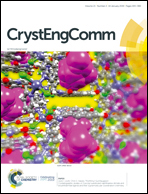Advancement toward ultra-thick and bright InGaN/GaN structures with a high number of QWs†
Abstract
InGaN/GaN multiple quantum well structures are studied as potential candidates for superfast scintillation detectors and show the leading decay time of around 1 ns and intense luminescence. Photoluminescence properties of these structures with quantum well (QW) numbers ranging from 10 to 60 are described and discussed. It is shown that with increased QW number, the luminescence efficiency of the whole structure increases due to the V-pits of a sufficient size suppressing non-radiative recombination. Suppression of the non-radiative recombination near dislocations is demonstrated by the cathodoluminescence measured at different acceleration voltages. The optimal V-pit size is found to be in the range from 200 to 300 nm, which is obtained for structures with 40 QWs. On the other hand, when the V-pit size exceeds the optimal value, the PL intensity decreases by strong V-pit coalescence, which is observed for structures with 60 QWs. For further increasing the active region thickness, which helps to enhance the detection efficiency of high-energy irradiation, it is necessary to find a way to control the V-pit size. Excitation–emission maps are measured to elucidate how efficiently the structures are excited depending on the light wavelength and the QW number. It is shown that the wavelength for most efficient excitations of InGaN/GaN QWs is 362 nm. With increasing number of QWs, their fast excitonic luminescence is considerably enhanced, whereas slow defect band luminescence is suppressed. Time-resolved measurements with soft X-ray excitation also support our conclusions, showing suppressed non-radiative recombination for structures with higher QW numbers. The fastest decay component increases from 0.25 ns for a structure with 10 QWs to 1.1 ns for a structure with 60 QWs.



 Please wait while we load your content...
Please wait while we load your content...